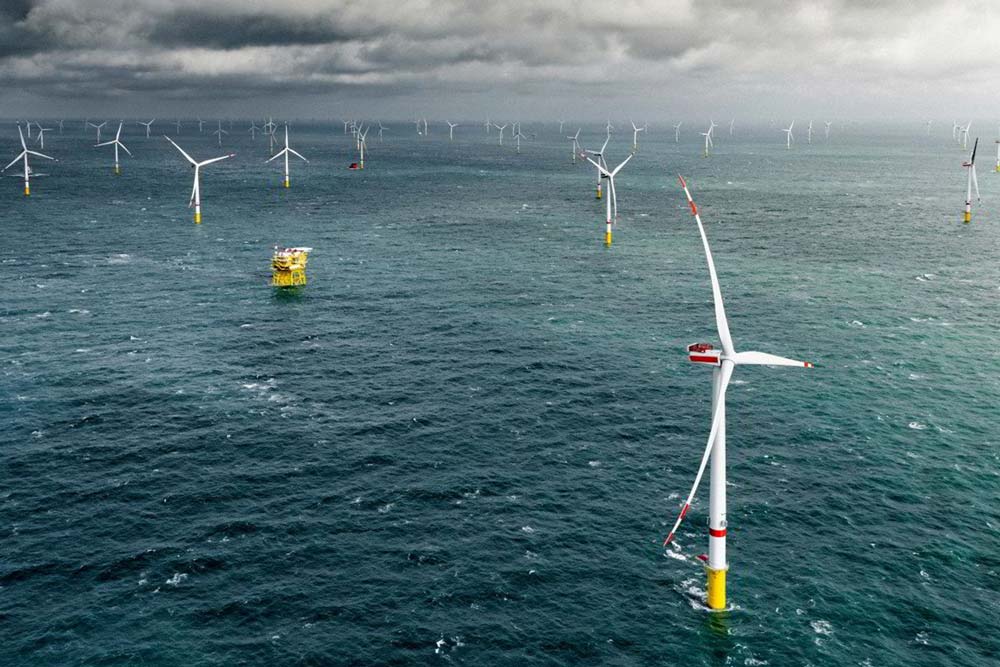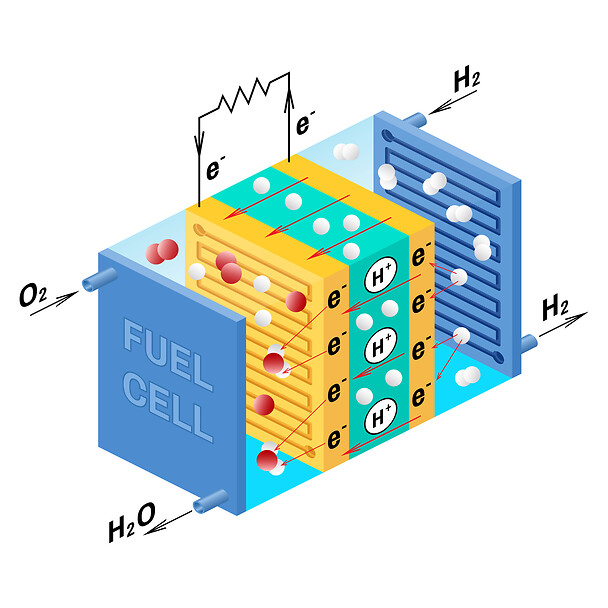Technologies
Converting Chemical Energy of Fuel
Green ESL and its associates are making transport cleaner and improving efficiency by offering solutions that put electric powered vehicles on the road and replace petrol/diesel with clean renewable fuels.
HYDROGEN AND FUEL CELLS
Green ESL is the foremost company for applied research and development of progressive hydrogen and fuel cell expertise. Green ESL supports the research and processes that makes it inexpensive and simpler to yield, supply, and stock hydrogen, whilst also working to reduce the expenses of fuel cells and improve their robustness and performance. Today, components like the membrane electrode assemblies use 75% less platinum making them cheaper and more efficient.
FUEL CELL TECHNOLOGIES OFFICE
The Fuel Cell Technologies Office concentrates on the barriers opposite the growth and distribution of ground-breaking hydrogen and fuel cell technologies with the final goals of lessening the whole One Belt, One Road initiative’s dependence on oil, reducing carbon emissions, and enabling clean, reliable power generation.
Process
1. Hydrogen Production
To successfully develop and supply water sources as a sustainable, clean, low cost competitive energy source thus reducing production cost, increasing production efficiency.
2. Hydrogen Storage
To successfully plan, design and develop new storage facilities and improve the use of current technologies with the aim of storing hydro energy without losing any of the power.
3. Fuel Cells
Fuel cells are predominantly used for transportation such as planes, boats, vehicles and trains. Supporting the building on current technologies to further improve fuel cells that convert hydrogen power to thermal or electrical power.
4. Manufacturing
Advancing procedures and equipment that decrease the costs of engineering fuel cell apparatuses and systems furthering commercialization and encouraging early implementation of hydrogen and fuel cell technologies.
Find out more
-
North Sea AuctionPopularNorth Sea Auction
-
Silk RoadSilk Road
-
FCOSUFCOSU
-
WaterWater
-
Renewable EnergyRenewable Energy
Clean Energy
Cleaner Energy for a Cleaner World
Renewable energy is power generated from sources that are constantly being replenished. These renewable energy resources won’t run out, unlike fossil fuels and gas, and include wind and solar energy.

North Sea Auction

Marine and hydrokinetic

Renewable Energy

How do Hydrogen Fuel Cells Work?
- Hydrogen enters the fuel cell via the anode. Here, hydrogen atoms react with a catalyst and split into electrons and protons. Oxygen from the ambient air enters on the other side through the cathode.
- Hydrogen enters the fuel cell via the anode. Here, hydrogen atoms react with a catalyst and split into electrons and protons. Oxygen from the ambient air enters on the other side through the cathode.
- In the cathode, the protons and oxygen then combine to produce water.
Hydrogen
Unleashing the Power of Hydrogen Fuel Cells
Similar to batteries, a fuel cell is a device that converts energy stored in molecules into electricity through an electrochemical reaction.
To successfully develop and supply water sources as a sustainable, clean, low cost competitive energy source thus reducing production cost, increasing production efficiency.
Successfully connecting the hydro power facilities with national grid to supply hydro power safely and efficiently.
To successfully plan, design and develop new storage facilities and improve and make use of current technologies with the aim of storing hydro energy without losing any of the power and to be able to consistently meet customer expectations.
Fuel cells are predominantly used for transportation such as planes, boats, vehicles and trains. We are successfully supporting the building on current technologies to further improve fuel cells that convert hydrogen power to thermal or electrical power.
Advancing procedures and equipment that decrease the costs of engineering fuel cell apparatuses and systems furthering commercialization and encouraging early implementation of hydrogen and fuel cell technologies.
Hydrogen is the most abundant element on earth and in the universe not including unknown elements. It contains one proton and to be electrical neutral it also contains one electron, if it contains more than one electron it becomes ionized hydrogen and it is an energy transporter different to an energy source. Hydrogen has the ability to stock and supply practical energy.
Hydrogen is used in fuel cells to produce energy by chemical reaction, creating only water and heat as side-effects. This fuel is used in cars and promoted heavily by most governments for use in transportation, it can also be used in houses, for portable power, and in many more applications.
Hydrogen can be formed using an assortment of local resources—comprising of fossil fuels, for example natural gas and coal and also nuclear power; and of course additional renewable energy sources, for instance wind, solar, geothermal, biomass, and hydroelectric power—using a diverse range of processes.
Hydrogen can be produced:
- At or local to the facility of use in distributed production.
- Larger sites that can supply the energy produced to a central supplier or national grid.
- At transitional facilities, between small and large sites that can be within 25–100 miles to the point of use in semi-central production.
Green ESL sponsors and supports the exploration and growth of a diverse range of technologies to yield hydrogen economically and in environmentally friendly customs.
A feasible hydrogen procedure means that the hydrogen be able to successfully be supplied from where it’s manifested to the user, similar to fuel distributers at a refuelling station or power plants linked to the national grid. The correct procedure requires the correct infrastructure including but not limited to pipelines, transport, storing amenities, dispensers, and compressors all integral to the procedure of delivering fuel.
Distribution technology for infrastructure associated with hydrogen is presently available commercially, and several U.S. companies deliver wholesale hydrogen now. As hydrogen has been used historically in industrial applications, some of the relevant and appropriate infrastructure is conveniently already in place, but it’s not adequate to aid large scale consumer roll out use of hydrogen as an energy carrier.
Currently hydrogen is hauled from facilities that produce Hydrogen to the point of use by many supply methods including by pipeline, by road whilst stored in cryogenic liquid tankers or by gaseous tube trailers, and by sea and rail. Hydrogen consumed in portable or fixed appliances can be transported by the same means, road, rail air and sea to a storing site and be stored in cylinders, similar to the modern fuels and gases such as propane used for gas grills or in a sealed unit that would be similar to a battery.
Hydrogen consumed in electric vehicles is allotted the same way gasoline is in modern vehicles. The driver of the vehicle will drive into a filling station, connect the fuel dispenser to the car or vehicle, supply fuel, and disengage the hose pipe in the same manner as modern gasoline powered vehicle, pay, and then exit the refilling station with the required amount of fuel. Refuelling an electric powered vehicle uses the same amount of time as refuelling a gasoline powered vehicle.
The Fuel Cell Technologies Office is improving through remodelling the automotive hydrogen storing and management operations system that permit for an extended driving range of more than 300 miles through efficiency savings although still satisfying cost, performance requirements and safety.
Elements can take many forms depending on the conditions that contain them, Hydrogen is generally stored as gas or liquid form. If the operator wishes to store hydrogen in gas form is normally require high pressure tanks in the region of 350–700 bar or alternatively 5,000–10,000 psi.
Due to the extremely low boiling point of hydrogen (−252.8°C), efficiently storing hydrogen at liquid form requires deep freezing. One of the alternatives to the common storage techniques is storing hydrogen as a solid this require it to be either adsorbed (stored on the surface of a solid object) or absorbed (stored within a solid object).
Fuel cells are revolutionary and are in use by some of the most state of art institutions in the world today including NASA. Fuel cells conduct chemical reactions of various elements but most notably hydrogen to generate energy for commercial usage. If hydrogen is the element being used then the only bi products are heat, electricity, water and fuel.
Fuel Cells are exceptional and potentially very prosperous due to the diverse applications from large macro units (e.g. an entire plantation) to tiny micro size units (e.g. a mobile phone, tablet or laptop).
Fuel cells operate similar to batteries, with one important factor, they do not require recharging and their energy supply does not drain. They will consistently produce energy whilst there is fuel supplied. A fuel cell contains two electrodes, one negative electrode which is known as an anode because it is negatively charged and one positive electrode which is known as a cathode because it is positively charged.
The anode and cathode are sandwiched surrounding an electrolyte. The chosen fuel source such as hydrogen, is supplied to the anode whilst the cathode is supplied air. In the hydrogen powered fuel cell, a reagent at the anode separates hydrogen molecules into protons and electrons, the protons and electrons select different paths to the cathode.
The electrons go through an external circuit, creating electricity. The protons travel through the electrolyte to the cathode, where they bond with oxygen to yield water and heat.

